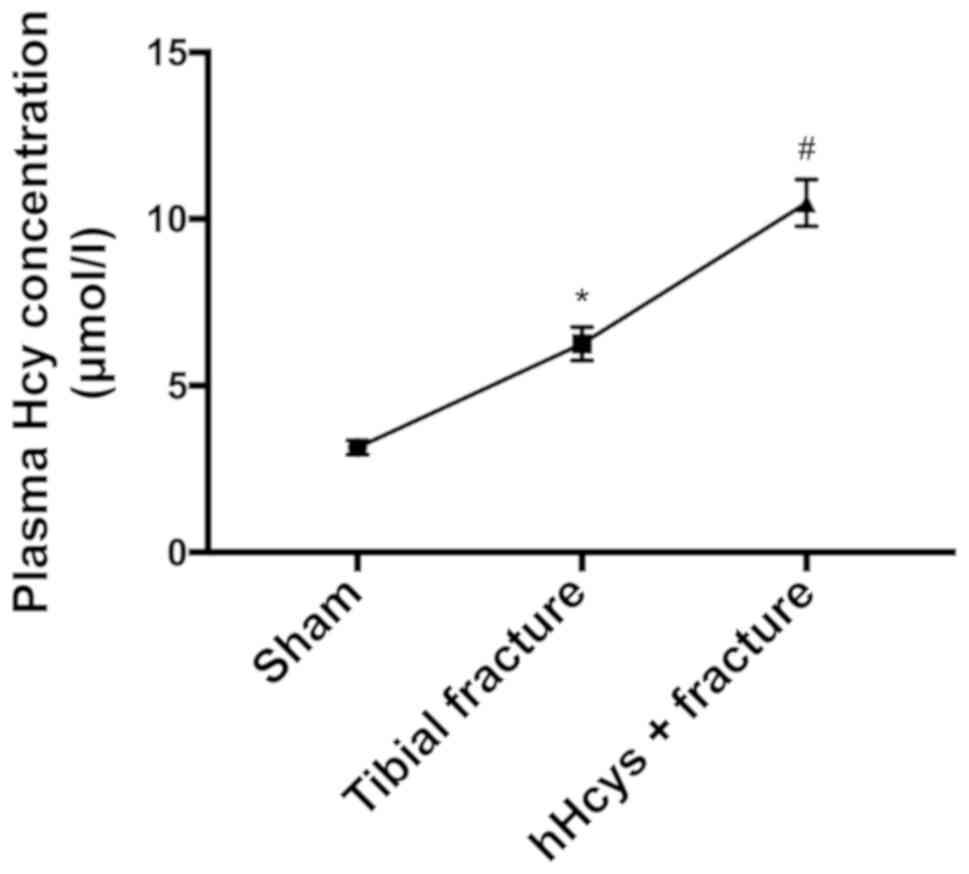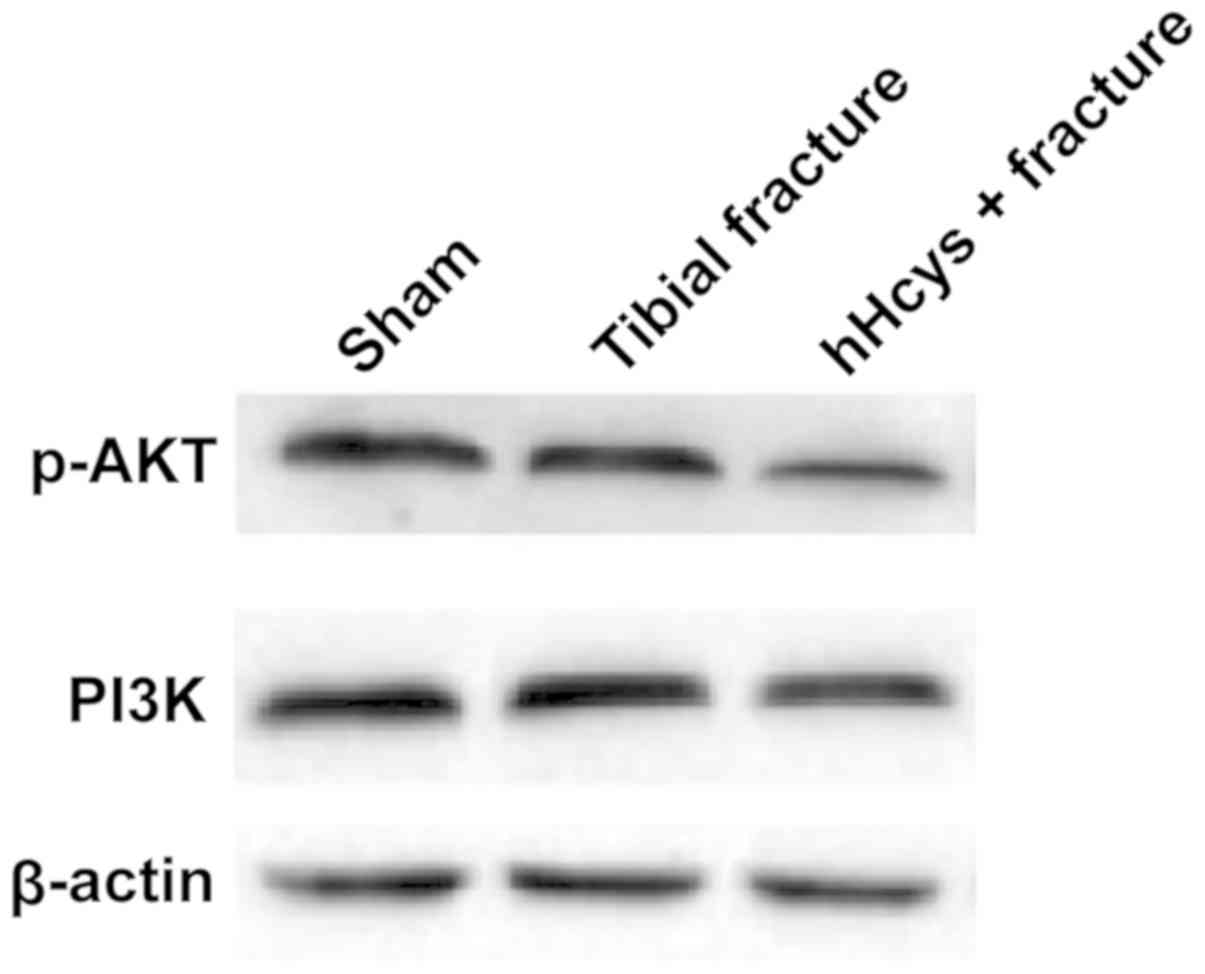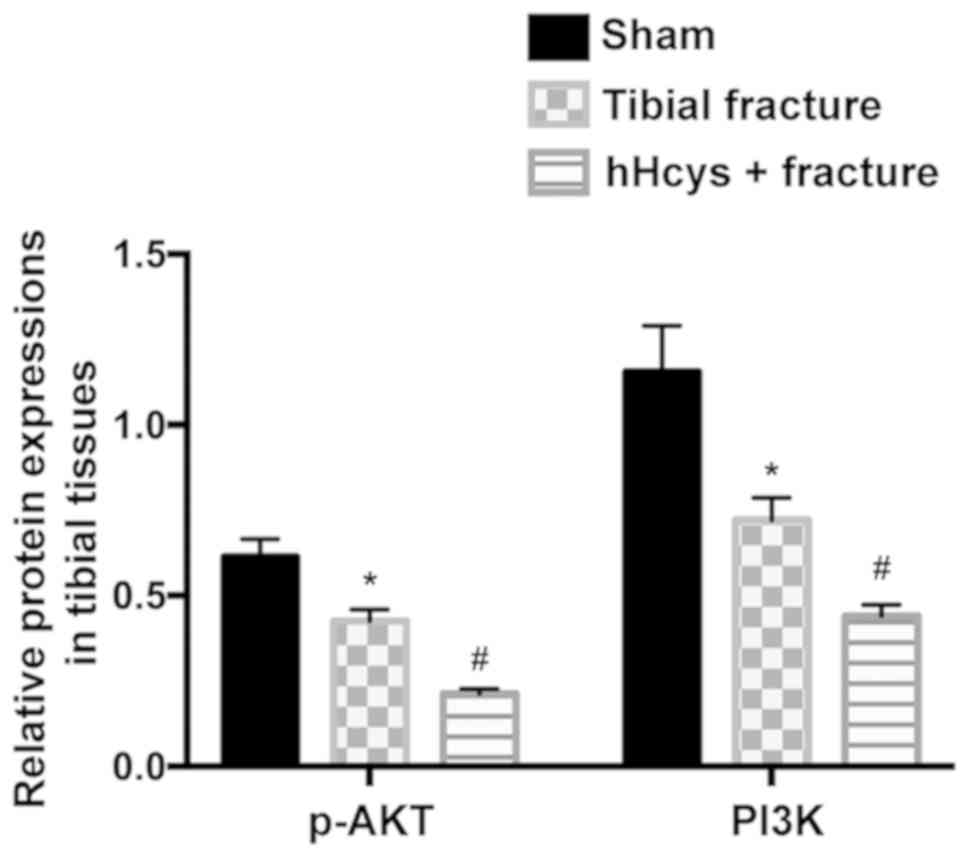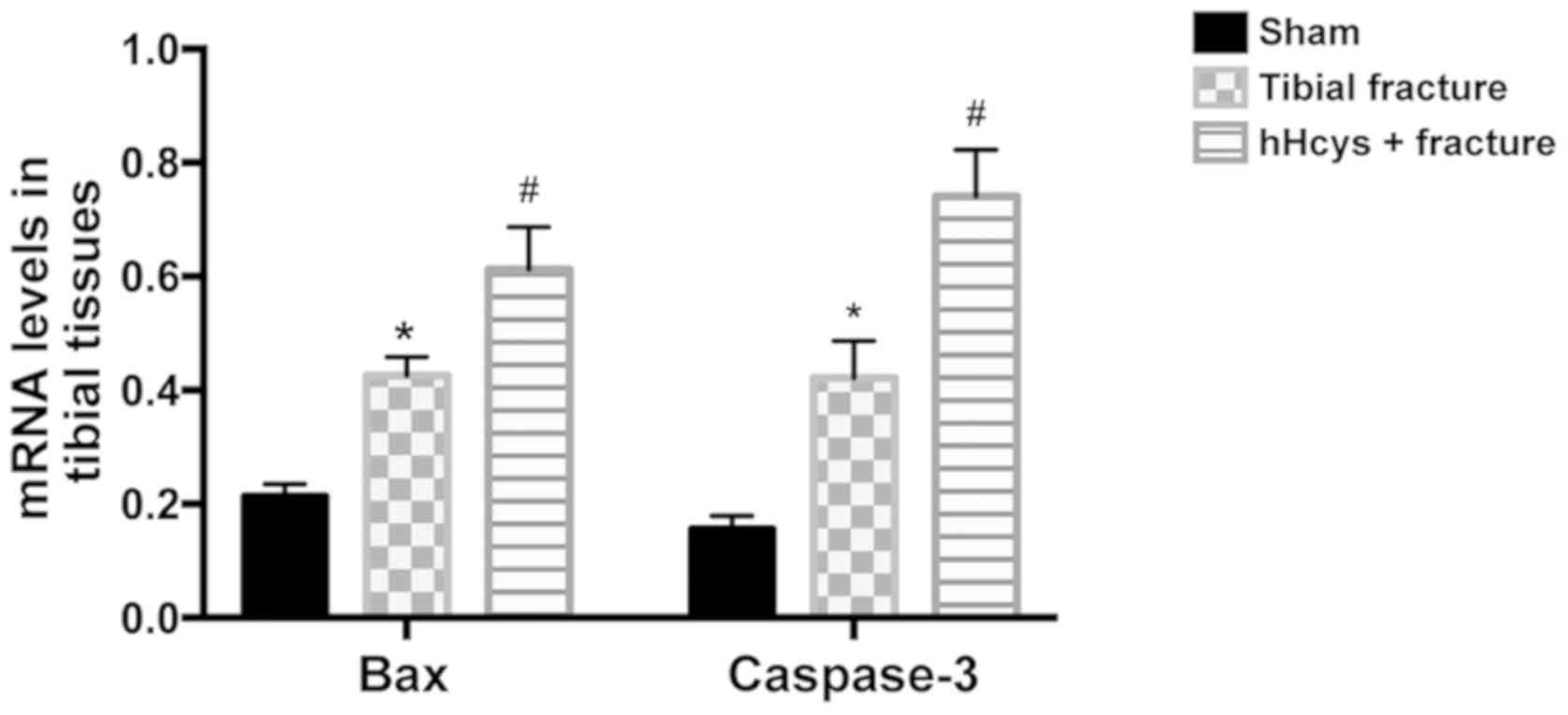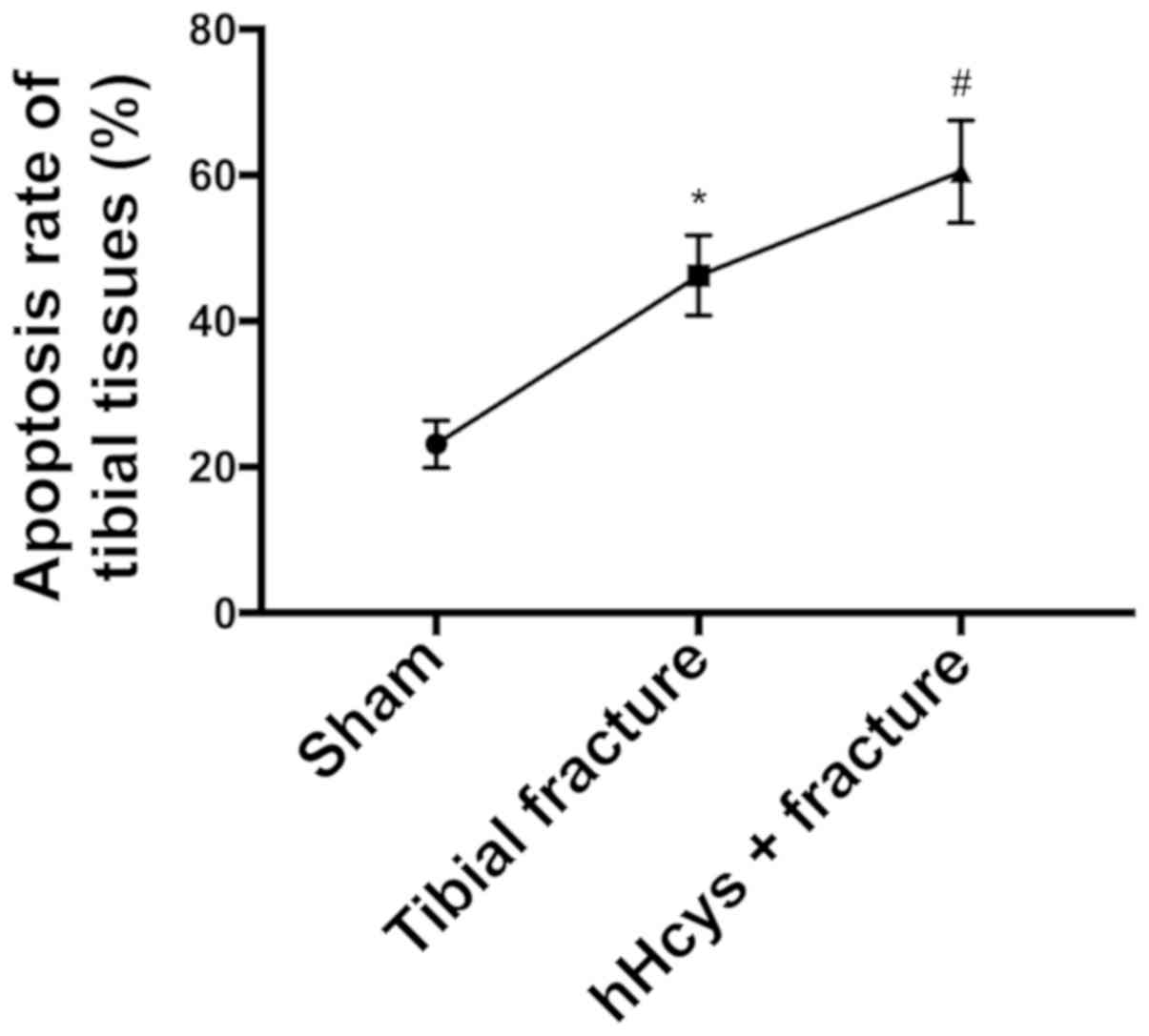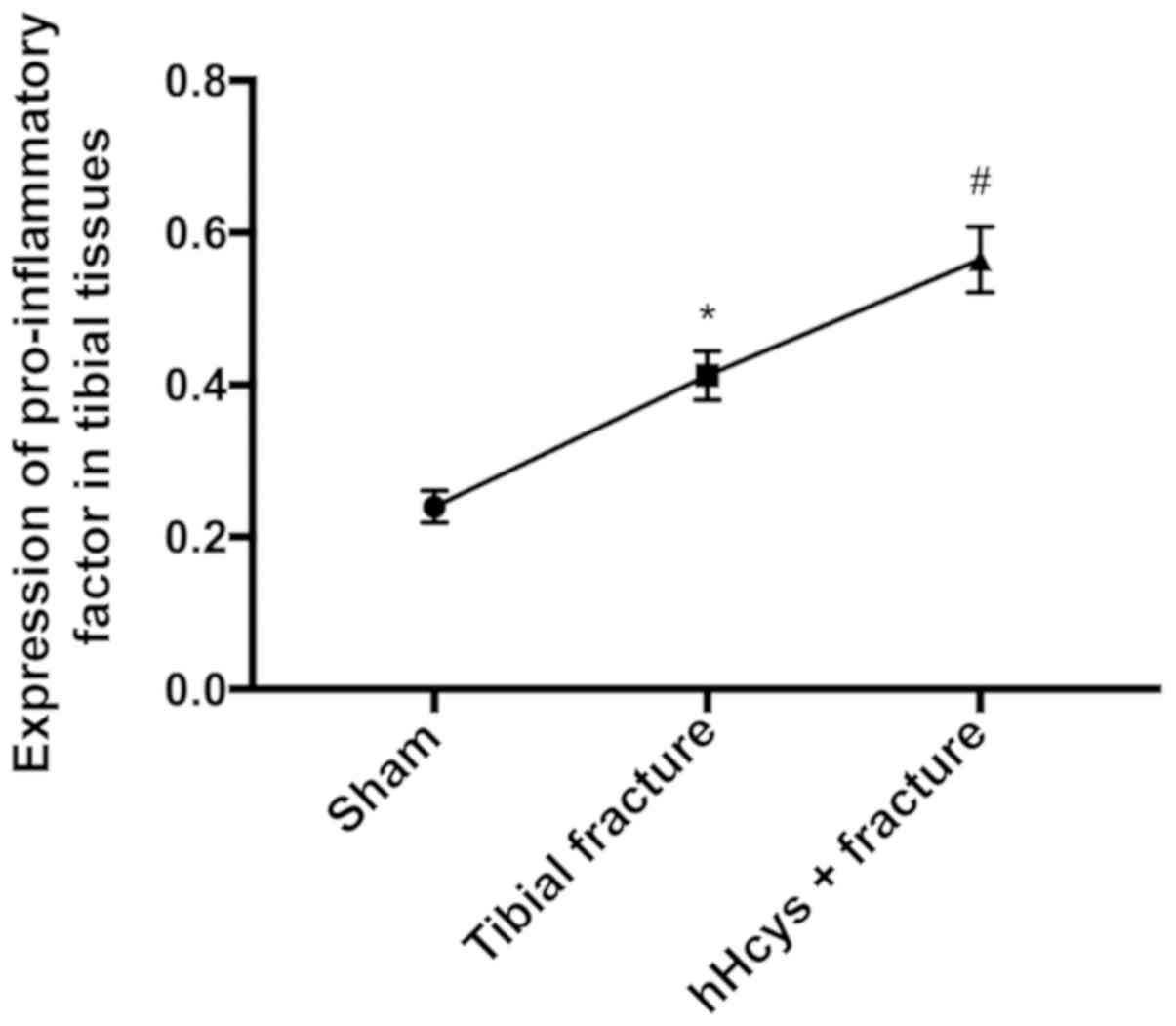|
1
|
Liu ZC, Xu YL, Jiang Y, Liu Y, Wei ZC, Liu
SG and Yang SJ: Low-expression of lncRNA-ANCR promotes tibial
fracture healing via targeting RUNX2. Eur Rev Med Pharmacol Sci. 23
(Suppl 3):60–66. 2019.PubMed/NCBI
|
|
2
|
Stepanova TV, Ivanov AN, Tereshkina NE,
Popyhova EB and Lagutina DD: Markers of endothelial dysfunction:
Pathogenetic role and diagnostic significance. Klin Lab Diagn.
64:34–41. 2019.(In Chinese). View Article : Google Scholar : PubMed/NCBI
|
|
3
|
Behera J, George AK, Voor MJ, Tyagi SC and
Tyagi N: Hydrogen sulfide epigenetically mitigates bone loss
through OPG/RANKL regulation during hyperhomocysteinemia in mice.
Bone. 114:90–108. 2018. View Article : Google Scholar : PubMed/NCBI
|
|
4
|
Cai B, Li X, Wang Y, Liu Y, Yang F, Chen
H, Yin K, Tan X, Zhu J, Pan Z, et al: Apoptosis of bone marrow
mesenchymal stem cells caused by homocysteine via activating JNK
signal. PLoS One. 8:e635612013. View Article : Google Scholar : PubMed/NCBI
|
|
5
|
Takeno A, Kanazawa I, Tanaka K, Notsu M,
Yokomoto M, Yamaguchi T and Sugimoto T: Activation of AMP-activated
protein kinase protects against homocysteine-induced apoptosis of
osteocytic MLO-Y4 cells by regulating the expressions of NADPH
oxidase 1 (Nox1) and Nox2. Bone. 77:135–141. 2015. View Article : Google Scholar : PubMed/NCBI
|
|
6
|
Kanazawa I, Tomita T, Miyazaki S, Ozawa E,
Yamamoto LA and Sugimoto T: Bazedoxifene ameliorates
homocysteine-induced apoptosis and accumulation of advanced
glycation end products by reducing oxidative stress in MC3T3-E1
cells. Calcif Tissue Int. 100:286–297. 2017. View Article : Google Scholar : PubMed/NCBI
|
|
7
|
Thaler R, Zwerina J, Rumpler M, Spitzer S,
Gamsjaeger S, Paschalis EP, Klaushofer K and Varga F: Homocysteine
induces serum amyloid A3 in osteoblasts via unlocking RGD-motifs in
collagen. FASEB J. 27:446–463. 2013. View Article : Google Scholar : PubMed/NCBI
|
|
8
|
Fan YS, Li Q, Hamdan N, Bian YF, Zhuang S,
Fan K and Liu ZJ: Tetrahydroxystilbene glucoside regulates
proliferation, differentiation, and OPG/RANKL/M-CSF expression in
MC3T3-E1 cells via the PI3K/Akt pathway. Molecules. 23:23062018.
View Article : Google Scholar
|
|
9
|
Chai C, Song LJ, Han SY, Li XQ and Li M:
MicroRNA-21 promotes glioma cell proliferation and inhibits
senescence and apoptosis by targeting SPRY1 via the PTEN/PI3K/AKT
signaling pathway. CNS Neurosci Ther. 24:369–380. 2018. View Article : Google Scholar : PubMed/NCBI
|
|
10
|
Jing X, Cheng W, Wang S, Li P and He L:
Resveratrol induces cell cycle arrest in human gastric cancer
MGC803 cells via the PTEN-regulated PI3K/Akt signaling pathway.
Oncol Rep. 35:472–478. 2016. View Article : Google Scholar : PubMed/NCBI
|
|
11
|
Handool KO, Ibrahim SM, Kaka U, Omar MA,
Abu J, Yusoff MS and Yusof LM: Optimization of a closed rat tibial
fracture model. J Exp Orthop. 5:132018. View Article : Google Scholar : PubMed/NCBI
|
|
12
|
Chaouad B, Moudilou EN, Ghoul A, Zerrouk
F, Moulahoum A, Othmani-Mecif K, Cherifi MEH, Exbrayat JM and
Benazzoug Y: Hyperhomocysteinemia and myocardial remodeling in the
sand rat, Psammomys obesus. Acta Histochem. 121:823–832. 2019.
View Article : Google Scholar : PubMed/NCBI
|
|
13
|
Kim DJ, Koh JM, Lee O, Kim NJ, Lee YS, Kim
YS, Park JY, Lee KU and Kim GS: Homocysteine enhances apoptosis in
human bone marrow stromal cells. Bone. 39:582–590. 2006. View Article : Google Scholar : PubMed/NCBI
|
|
14
|
Thaler R, Agsten M, Spitzer S, Paschalis
EP, Karlic H, Klaushofer K and Varga F: Homocysteine suppresses the
expression of the collagen cross-linker lysyl oxidase involving
IL-6, Fli1, and epigenetic DNA methylation. J Biol Chem.
286:5578–5588. 2011. View Article : Google Scholar : PubMed/NCBI
|
|
15
|
Saito M, Fujii K and Marumo K: Degree of
mineralization-related collagen crosslinking in the femoral neck
cancellous bone in cases of hip fracture and controls. Calcif
Tissue Int. 79:160–168. 2006. View Article : Google Scholar : PubMed/NCBI
|
|
16
|
Boyce BF, Li J, Xing L and Yao Z: Bone
Remodeling and the Role of TRAF3 in Osteoclastic Bone Resorption.
Front Immunol. 9:22632018. View Article : Google Scholar : PubMed/NCBI
|
|
17
|
Yang A, Lu Y, Xing J, Li Z, Yin X, Dou C,
Dong S, Luo F, Xie Z, Hou T, et al: IL-8 enhances therapeutic
effects of BMSCs on bone regeneration via CXCR2-mediated PI3k/Akt
signaling pathway. Cell Physiol Biochem. 48:361–370. 2018.
View Article : Google Scholar : PubMed/NCBI
|
|
18
|
Ayala-Peña VB, Scolaro LA and Santillán
GE: ATP and UTP stimulate bone morphogenetic protein-2,-4 and −5
gene expression and mineralization by rat primary osteoblasts
involving PI3K/AKT pathway. Exp Cell Res. 319:2028–2036. 2013.
View Article : Google Scholar : PubMed/NCBI
|
|
19
|
Qu Z, Guo S, Fang G, Cui Z and Liu Y: AKT
pathway affects bone regeneration in nonunion treated with
umbilical cord-derived mesenchymal stem cells. Cell Biochem
Biophys. 71:1543–1551. 2015. View Article : Google Scholar : PubMed/NCBI
|
|
20
|
Scanlon V, Walia B, Yu J, Hansen M, Drissi
H, Maye P and Sanjay A: Loss of Cbl-PI3K interaction modulates the
periosteal response to fracture by enhancing osteogenic commitment
and differentiation. Bone. 95:124–135. 2017. View Article : Google Scholar : PubMed/NCBI
|















